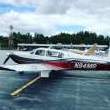Mooney N94MR- Paint Project
-
Members Online
- YuriE
- IgorD
- TangoTango
- Shadrach
- Yan X
- Rick Junkin
- Bolter
- Fly Boomer
- PeteMc
- MB65E
- Justin Schmidt
- DanM20C
- SKI
- 201Steve
- FlyingDude
- jcovington
- 201Mooniac
- Sabremech
- varlajo
- Andy95W
- eman1200
- 00-Negative
- rahill
- Flyler
- atpdave
- pinkiedog64
- Elijah
- 47U
- Lax291
- Fritz1
- Hank
- 1980Mooney
- Jason 1996 MSE
- KIERSTIN
- Ragsf15e
- ad5ut
- DonMuncy
- Will.iam
- exM20K
- jeremyc209


Recommended Posts